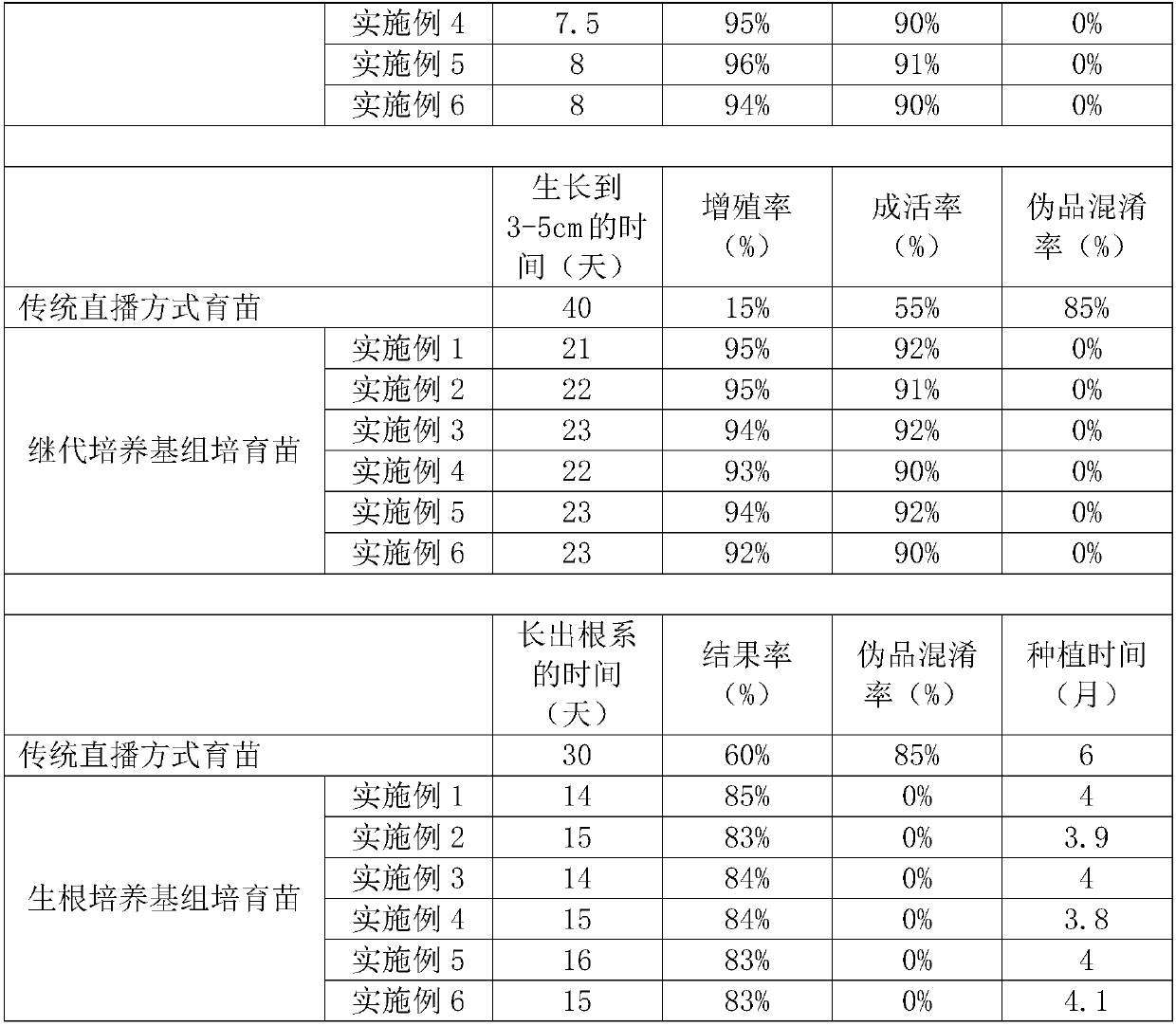Hedyotis diffusa tissue culture technology
A technology of Hedyotis diffusa and tissue culture is applied in the field of tissue culture and seedling raising of Hedyotis diffusa
- Summary
- Abstract
- Description
- Claims
- Application Information
AI Technical Summary
Problems solved by technology
Method used
Image
Examples
Embodiment 1
[0047] A tissue culture technique for Hedyotis diffusa, comprising:
[0048] The selection and disinfection steps of explants: select the Hedyotis diffusa plant that has grown for 4-5 months, and in late July, the whole plant is picked by the seeds of the roots of the plant (Hendyotis diffusa is sown in spring and harvested in autumn, and it blooms from the root to the top. Lace results, so when collecting seeds, try to pick the ones that are close to the root to ensure the maturity of the seeds), cut off the immature part of the top, dry the stems of the mature part of the seeds together, and then crush the seeds (use a gauze-wrapped mallet to crush the seeds) Press), remove the waxy seed shell, sieve out impurities and ash, then put it into a clean beaker and move it to the inoculation room, and sterilize it on a sterile operating table; first soak it with 75% medical alcohol for 30s (75% alcohol is relatively Other disinfection reagents are more thorough in disinfection and...
Embodiment 2
[0055] The difference between Example 2 and Example 1 is that in the selection and disinfection steps of the explants, the Hedyotis diffusa plant that has grown for 4-5 months is selected, and in the first ten days of August, the whole plant is picked from the seeds at the root of the plant. , cut off the immature part of the top, dry the stems of the mature part of the seed together, roll out the seeds, remove the waxy seed shell, sieve out impurities and ash, and then put them into a clean beaker and move them to the inoculation room. Disinfect on the sterile operating table; first soak in 75% medical alcohol for 60s, stir continuously with tweezers during soaking, then rinse with sterile water for 3 times; finally disinfect with 45% sodium hypochlorite for 8 minutes, rinse with sterile water for 5 times , to obtain sterile seeds, and put them in a sterile tray on the ultra-clean workbench for later use.
[0056] Others are identical with specific embodiment 1.
Embodiment 3
[0058] The difference between embodiment 3 and embodiment 1 is:
[0059] In the sowing step: sow the sterile seeds on the first 1 / 2MS medium with a high-temperature sterilized spoon, seal the lid after sterilizing the bottle cap, and then transfer it to the cultivation room for cultivation. The temperature of the cultivation chamber is 24- 26°C, the light intensity is 2000-2500lx, and the light time is 12 hours / day. After the seeds germinate, continue to cultivate until the seedlings are 2-3cm long, and obtain a first-class mother bottle; the composition of the first 1 / 2MS medium is as follows: nitric acid Potassium 1900mg / L, ammonium nitrate 1650mg / L, calcium chloride dihydrate 445mg / L, magnesium sulfate heptahydrate 375mg / L, potassium dihydrogen phosphate 170mg / L, potassium iodide 0.83mg / L, boric acid 6.2mg / L, tetrahydrate Manganese sulfate 23.0mg / L, zinc sulfate heptahydrate 9.0mg / L, sodium molybdate 0.25mg / L, copper sulfate pentahydrate 0.028mg / L, cobalt chloride 0.03mg / L,...
PUM
 Login to View More
Login to View More Abstract
Description
Claims
Application Information
 Login to View More
Login to View More - R&D
- Intellectual Property
- Life Sciences
- Materials
- Tech Scout
- Unparalleled Data Quality
- Higher Quality Content
- 60% Fewer Hallucinations
Browse by: Latest US Patents, China's latest patents, Technical Efficacy Thesaurus, Application Domain, Technology Topic, Popular Technical Reports.
© 2025 PatSnap. All rights reserved.Legal|Privacy policy|Modern Slavery Act Transparency Statement|Sitemap|About US| Contact US: help@patsnap.com


